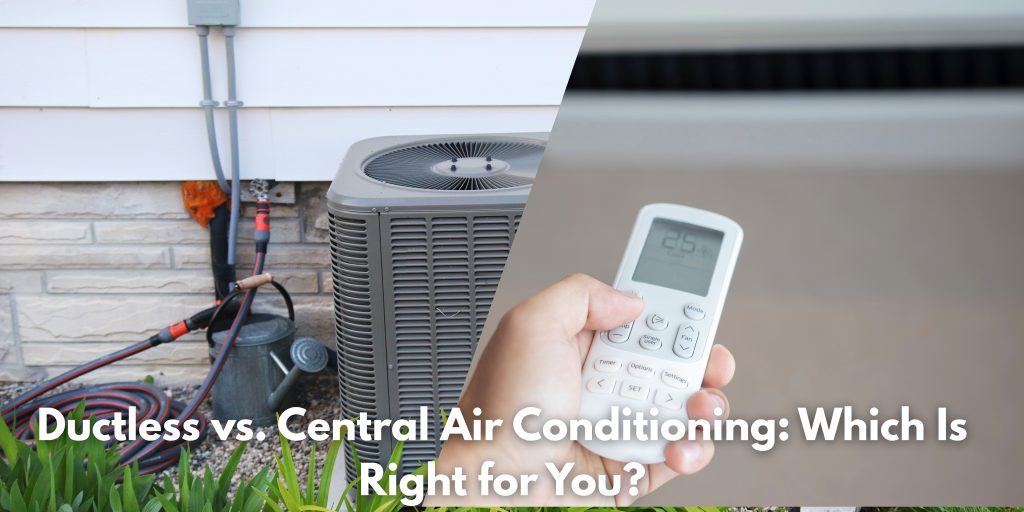Ductless vs. Central Air Conditioning: Which Is Right for You?

Ductless vs. Central Air Conditioning: Which Is Right for You?
Understanding the Differences: Ductless Mini-Splits vs. Central AC Systems
As homeowners increasingly search for efficient and cost-effective cooling options, two systems often come to the forefront: ductless mini-split systems and central air conditioning. While both provide whole-home comfort, they differ significantly in design, installation, and performance.
A central air conditioning system uses a network of ducts to deliver cooled air from a central unit throughout the home. It’s typically ideal for larger homes or those that already have ductwork installed. On the other hand, ductless mini-splits consist of one or more indoor air handlers connected to an outdoor condenser unit. These require no ductwork and are ideal for targeted cooling or additions where extending ducts isn’t feasible.
Understanding how these systems operate can help you assess which type aligns best with your home’s structure, budget, and efficiency goals—especially in a time when energy costs and indoor air quality are top concerns for many.
Comparing Efficiency, Cost, and Installation
When it comes to energy efficiency, ductless systems often have the upper hand—especially in homes without existing ducts. Traditional ductwork can lose up to 30% of conditioned air through leaks and poor insulation. Ductless systems avoid this entirely, making them ideal for reducing energy waste and cutting monthly utility bills. Most ductless units also offer zoned control, allowing you to cool only the rooms you’re using, unlike central AC which cools the entire home at once.
However, central air conditioners can be more cost-effective upfront—especially if your home already has ductwork in place. A central AC installation might range from $4,000 to $7,000, while a full ductless system for a whole house could exceed $8,000 to $15,000, depending on the number of zones. Installation for ductless systems tends to be quicker and less invasive, often completed in a day or two with minimal construction.
When considering maintenance and longevity, both systems typically last 12–20 years, but ductless units may require more frequent filter cleaning, especially in dusty environments or pet-heavy households.
Choosing the Right Cooling System for Your Home in 2025
Deciding between ductless and central air conditioning depends largely on your home’s existing infrastructure, size, layout, and your personal comfort priorities. If your home has existing ducts in good condition, central air may offer seamless integration and a unified look. However, for older homes without ductwork, smaller apartments, renovations, or additions, ductless systems offer unmatched flexibility and energy control.
In 2025, environmental factors are more important than ever. Ductless systems tend to use inverter technology, which adjusts compressor speed based on demand, resulting in lower energy consumption and a smaller carbon footprint. Additionally, many mini-split systems now come with built-in air purification features—a growing concern for homeowners focused on health and air quality.
Ultimately, the best choice depends on your long-term goals. Are you seeking energy savings, easier zoning, and room-by-room control? Or do you prefer a uniform, whole-home cooling solution that’s more familiar and potentially lower in upfront cost? Consult with a licensed HVAC professional to assess your home’s layout, usage needs, and efficiency goals before making a final decision. Regardless of your choice, both systems offer modern cooling solutions designed to meet the diverse needs of today’s homeowners.



